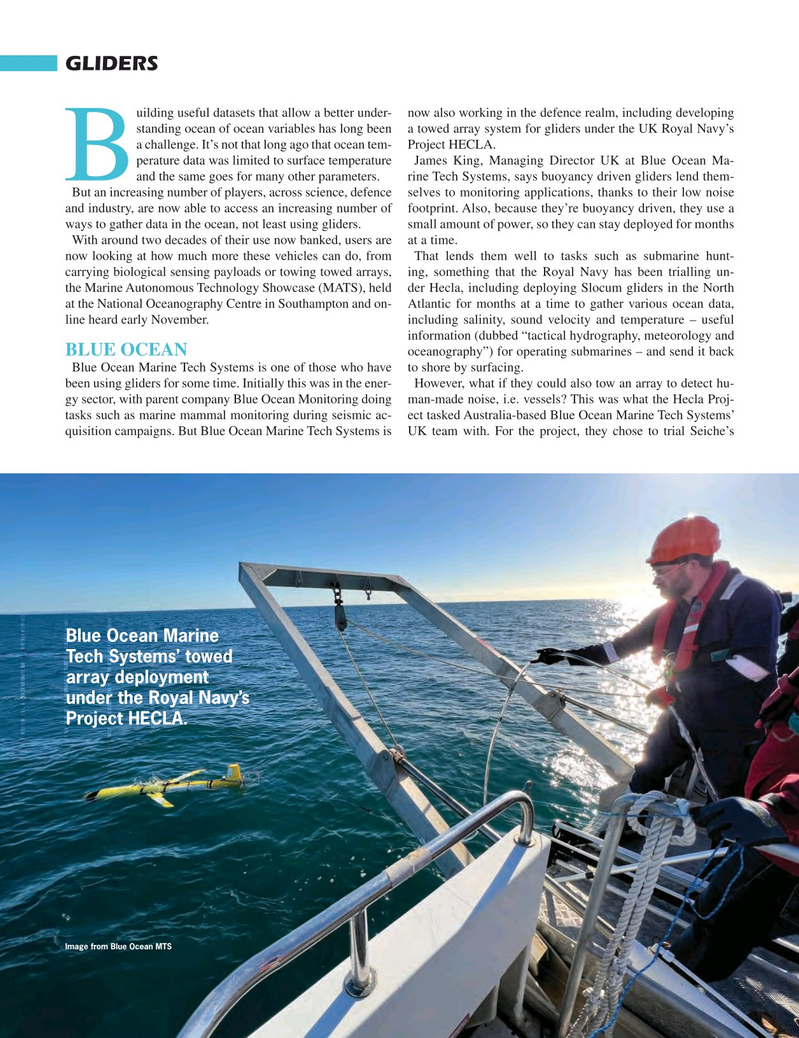
Page 28: of Marine Technology Magazine (November 2022)
Read this page in Pdf, Flash or Html5 edition of November 2022 Marine Technology Magazine
GLIDERS uilding useful datasets that allow a better under- now also working in the defence realm, including developing standing ocean of ocean variables has long been a towed array system for gliders under the UK Royal Navy’s a challenge. It’s not that long ago that ocean tem- Project HECLA. perature data was limited to surface temperature James King, Managing Director UK at Blue Ocean Ma-
Band the same goes for many other parameters. rine Tech Systems, says buoyancy driven gliders lend them-
But an increasing number of players, across science, defence selves to monitoring applications, thanks to their low noise and industry, are now able to access an increasing number of footprint. Also, because they’re buoyancy driven, they use a ways to gather data in the ocean, not least using gliders. small amount of power, so they can stay deployed for months
With around two decades of their use now banked, users are at a time. now looking at how much more these vehicles can do, from That lends them well to tasks such as submarine hunt- carrying biological sensing payloads or towing towed arrays, ing, something that the Royal Navy has been trialling un- the Marine Autonomous Technology Showcase (MATS), held der Hecla, including deploying Slocum gliders in the North at the National Oceanography Centre in Southampton and on- Atlantic for months at a time to gather various ocean data, line heard early November. including salinity, sound velocity and temperature – useful information (dubbed “tactical hydrography, meteorology and
BLUE OCEAN oceanography”) for operating submarines – and send it back
Blue Ocean Marine Tech Systems is one of those who have to shore by surfacing. been using gliders for some time. Initially this was in the ener- However, what if they could also tow an array to detect hu- gy sector, with parent company Blue Ocean Monitoring doing man-made noise, i.e. vessels? This was what the Hecla Proj- tasks such as marine mammal monitoring during seismic ac- ect tasked Australia-based Blue Ocean Marine Tech Systems’ quisition campaigns. But Blue Ocean Marine Tech Systems is UK team with. For the project, they chose to trial Seiche’s
Blue Ocean Marine
Tech Systems’ towed array deployment under the Royal Navy’s
Project HECLA.
Image from Blue Ocean MTS
MTR #8 (18-33).indd 28 11/29/2022 3:53:24 PM

 27
27

 29
29
